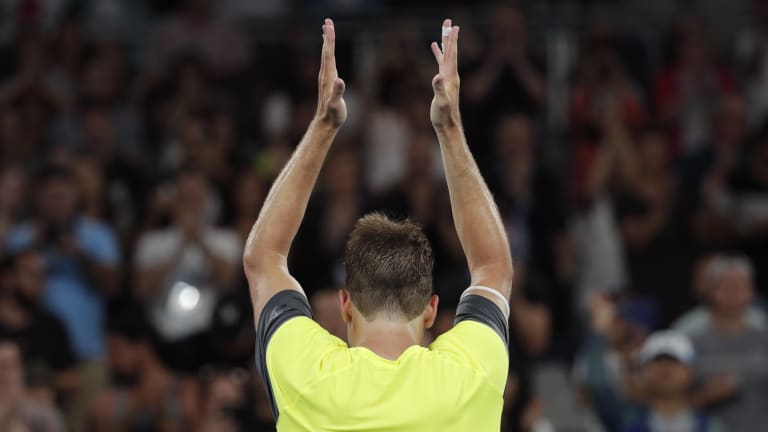Hyeon Chung, it seemed, had played his part in the script, and he had played it well. But now it was time for him to step aside and let the star take over the stage.
In front of a fully packed in Rod Laver Arena—with the Rocket himself in attendance—Chung broke Djokovic twice to start the match. When Djokovic made his expected move to close the gap, Chung hung on long enough to take the first set to a tiebreaker. But now the Serb had the young Korean squarely in his sights. Djokovic began the breaker by stepping into the court, drilling a forehand winner down the line, and flashing a stare in Chung’s direction. The message was clear, and it was the same one we’d been hearing for the last 10 years: it was Big 4 time. Meaning, it was time for the kids to go home.
Except that the 21-year-old Chung, despite sporting his trademark, futuristic, soon-to-be-imitated white glasses, didn’t get the message. Instead, he answered with what can only be described as a Djokovichian shot-making display. He powered his returns down the middle of the court; he sprinted wide of the sidelines and did full-split stretches to dig the ball out; he hooked his heavy forehand crosscourt; he changed the direction of the ball at will and went down the line with the same ease that most players go crosscourt; he hit his backhand as lethally as his forehand. As Chung said later, he spent his youth trying to copy his “idol” Djokovic’s game. Mission, scarily, accomplished.
Chung won the tiebreaker 7-4. Unfortunately for Djokovic, the long rallies and heavy workload—this three-set match, 7-6 (4), 7-4, 7-6 (3), lasted three hours and 21 minutes—took their toll on his recovering body. By the end of the first set, he was flexing his recently injured elbow; by the second set, he was getting treatment.
“It’s not great,” Djokovic said afterward, when he was asked about his elbow. “Kind of the end of the first set it started hurting more. So yeah, I had to deal with it until the end of the match.”
“It’s frustrating, of course, when you have that much time and you don’t heal properly.” He says he’ll have his elbow reassessed before going on with his season.
Match Point:
